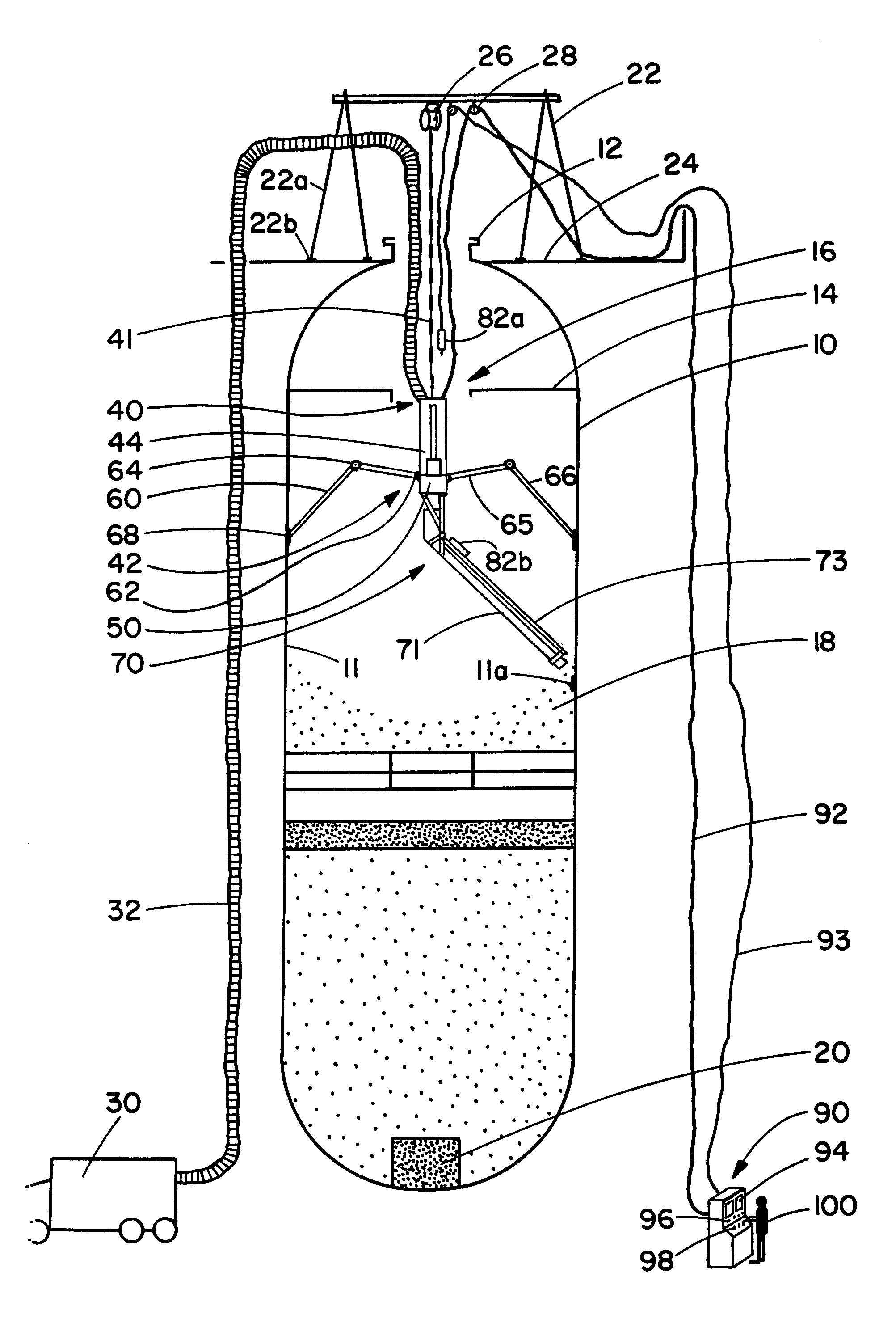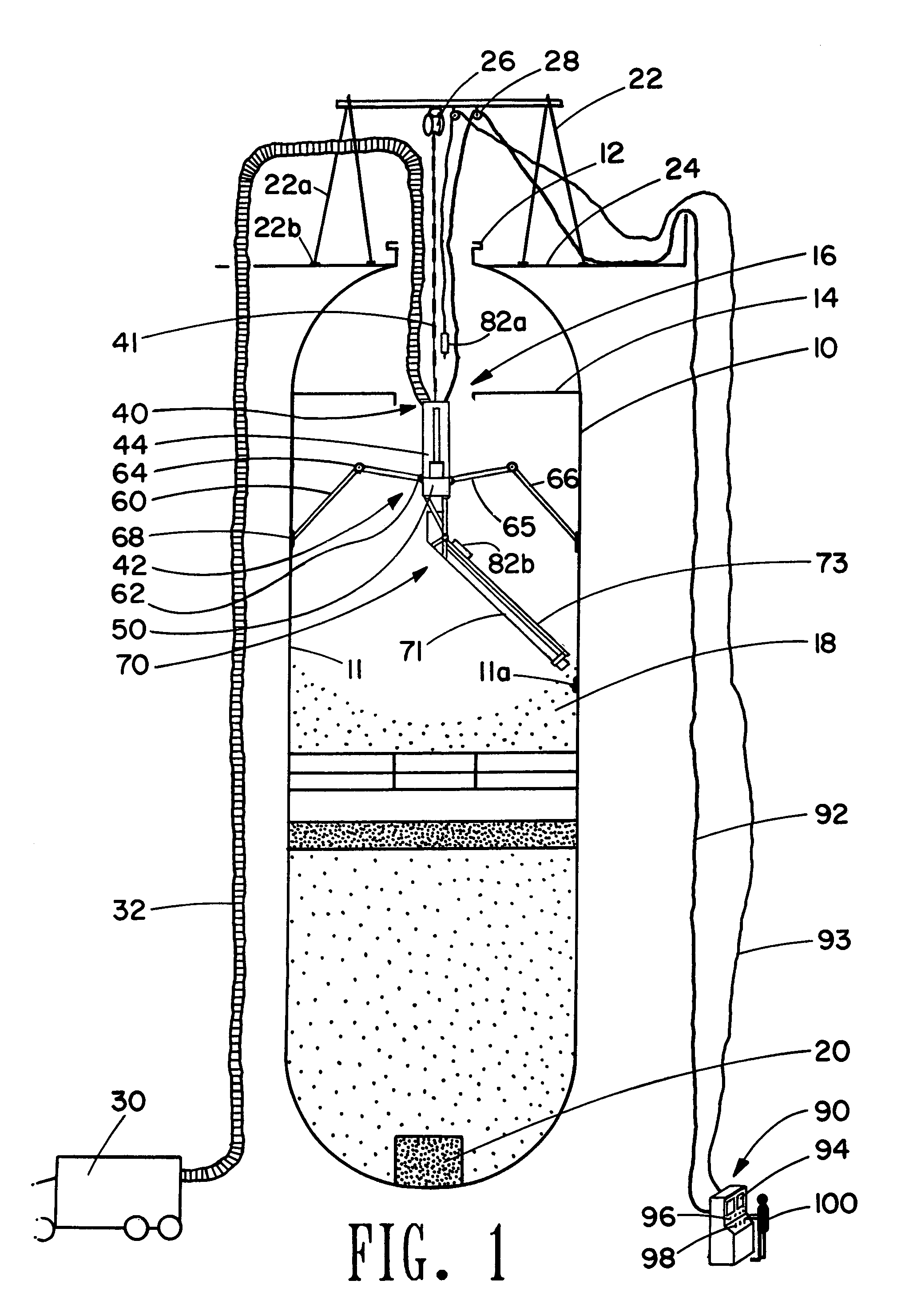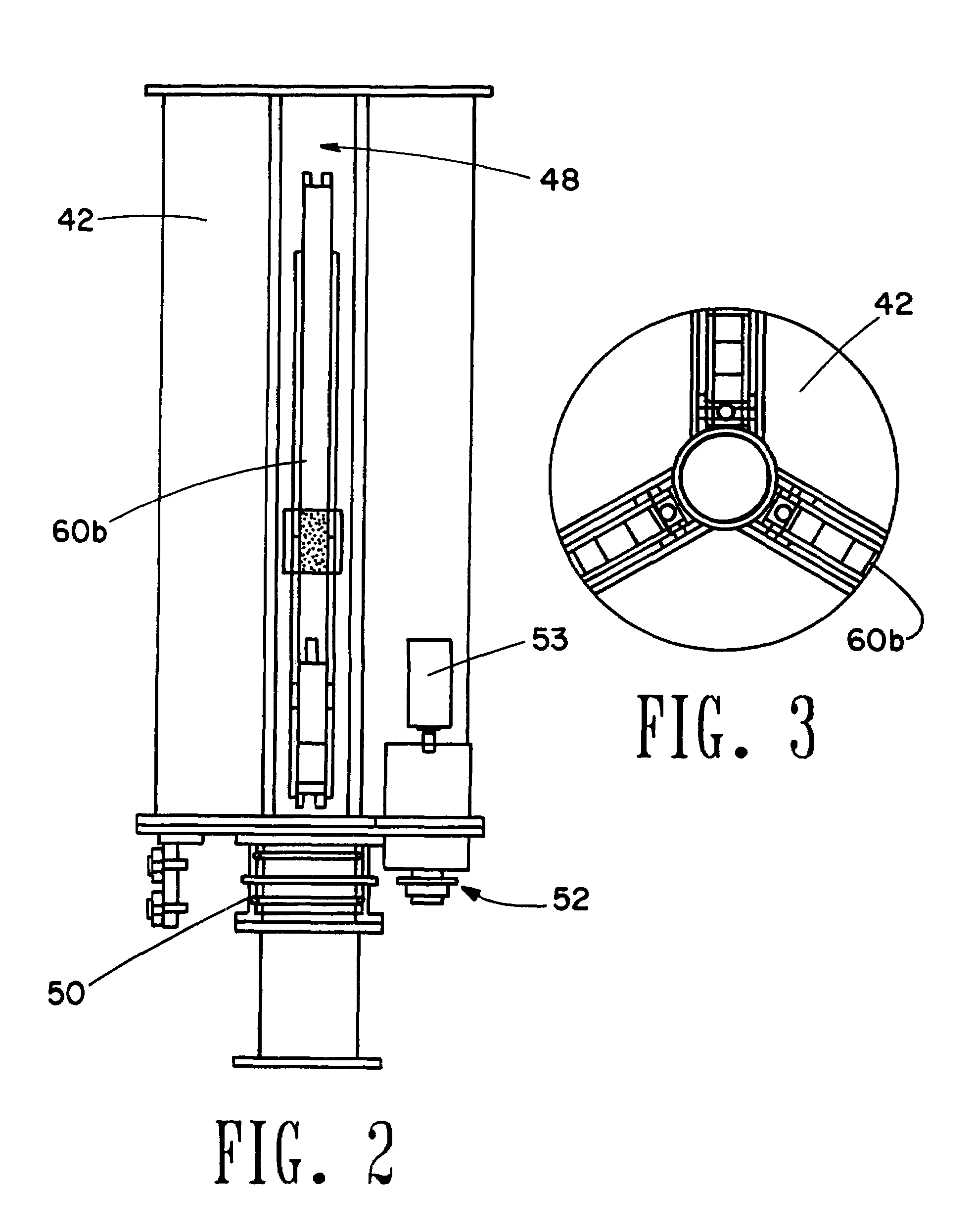Cleaning and/or inspecting robot for hazardous environments including catalyst removal
- Summary
- Abstract
- Description
- Claims
- Application Information
AI Technical Summary
Benefits of technology
Problems solved by technology
Method used
Image
Examples
Embodiment Construction
[0021]Referring to FIG. 1, a typical reactor vessel 10 is shown. The reactor vessel 10 has an entry manway 12, trays 14 with tray manways 16, catalyst 18 (which, as depicted, is to be removed), and an outlet screen 20 leading to a line out (not shown). An A-frame 22 is mounted on a platform 24 located near the top of the reactor vessel 10. A hoist system 26 and pulley 28 are mounted on the A-frame 22. The A-frame 22 may have legs 22a with vulcanized rubber pads 22b (between the legs 22a and the platform 24).
[0022]A vacuum source 30 which may be mobile is placed exterior to the reactor vessel 10. A vacuum line / tube 32 runs from the vacuum source 30 into the reactor vessel 10 and connects to a robotic device 40. The vacuum line 32 preferably runs into the main body 42 of the robotic device 40. The vacuum line 32 could be attached to the A-frame 22 with a hoist and pulley (not shown) mounted above the reactor vessel 10. The vacuum line 32 may, for example but without limitation, be mad...
PUM
 Login to View More
Login to View More Abstract
Description
Claims
Application Information
 Login to View More
Login to View More - R&D
- Intellectual Property
- Life Sciences
- Materials
- Tech Scout
- Unparalleled Data Quality
- Higher Quality Content
- 60% Fewer Hallucinations
Browse by: Latest US Patents, China's latest patents, Technical Efficacy Thesaurus, Application Domain, Technology Topic, Popular Technical Reports.
© 2025 PatSnap. All rights reserved.Legal|Privacy policy|Modern Slavery Act Transparency Statement|Sitemap|About US| Contact US: help@patsnap.com



